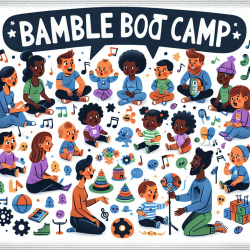Understanding Self-Cutting Behavior in Adolescents: Key Insights for Practitioners
Adolescents in the juvenile legal system are at a heightened risk for self-cutting behavior, a prevalent form of non-suicidal self-injury (NSSI). This behavior is not only a critical mental health issue but also a predictor of future suicide attempts. Recent research by Meza et al. (2023) sheds light on the psychosocial factors associated with self-cutting behavior among adolescents at their first contact with the juvenile court. As practitioners, understanding these factors can significantly enhance our ability to provide effective interventions.
Key Findings from the Research
The study involved a two-year longitudinal analysis of 401 adolescents, focusing on both risk and protective factors associated with self-cutting behavior. Key risk factors identified include:
- Affect dysregulation
- Post-traumatic stress disorder (PTSD) symptoms
- Impulsive decision-making
- Anxiety and depression symptoms
On the other hand, protective factors that were associated with a decreased risk of self-cutting behavior included:
- Positive communication with caregivers and family
- Higher self-esteem
- Having a caring and supportive family environment
Implications for Practitioners
For practitioners working with adolescents in the juvenile legal system, these findings underscore the importance of a holistic approach that addresses both individual and family dynamics. Here are some actionable steps practitioners can take:
- Enhance Family Communication: Encourage open and positive communication between adolescents and their caregivers. Family therapy sessions can be instrumental in fostering a supportive home environment.
- Focus on Emotional Regulation: Implement therapeutic interventions that help adolescents develop skills for managing emotions effectively. Cognitive-behavioral therapy (CBT) and dialectical behavior therapy (DBT) are proven methods.
- Screen for PTSD and Internalizing Symptoms: Regular screenings for PTSD, anxiety, and depression can help in early identification and intervention, reducing the risk of self-cutting behavior.
- Promote Self-Esteem: Activities and therapies that build self-esteem can serve as protective factors against self-harm. Encourage participation in group activities that foster a sense of achievement and belonging.
Encouraging Further Research
While this study provides valuable insights, it also highlights the need for further research, particularly in diverse populations and across different stages of legal involvement. Practitioners are encouraged to stay informed about ongoing research and incorporate evidence-based practices into their therapeutic approaches.
To read the original research paper, please follow this link: Risk and Protective Factors Associated with Self-Cutting Behavior Among Adolescents at First Contact with the Juvenile Court.










